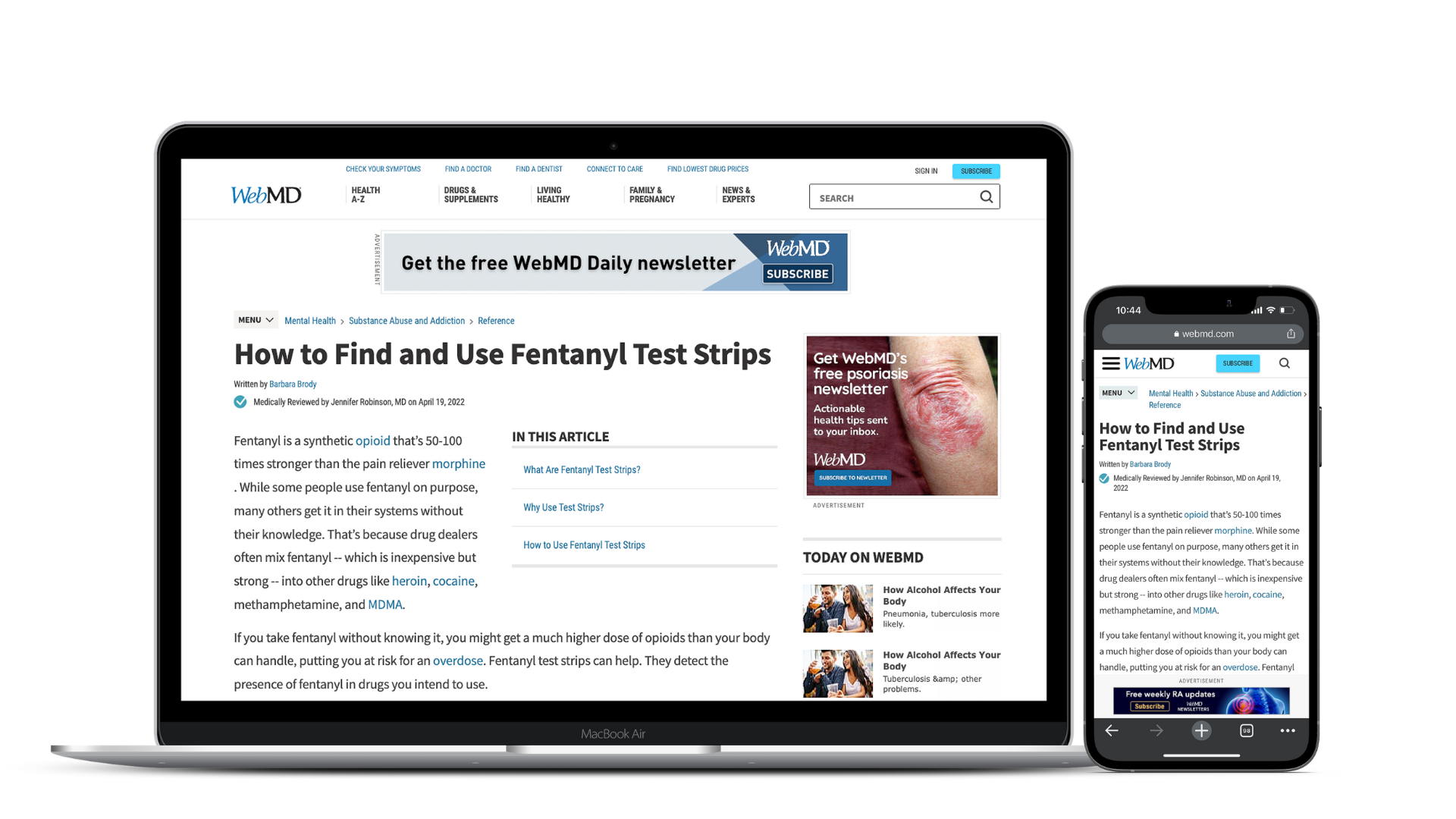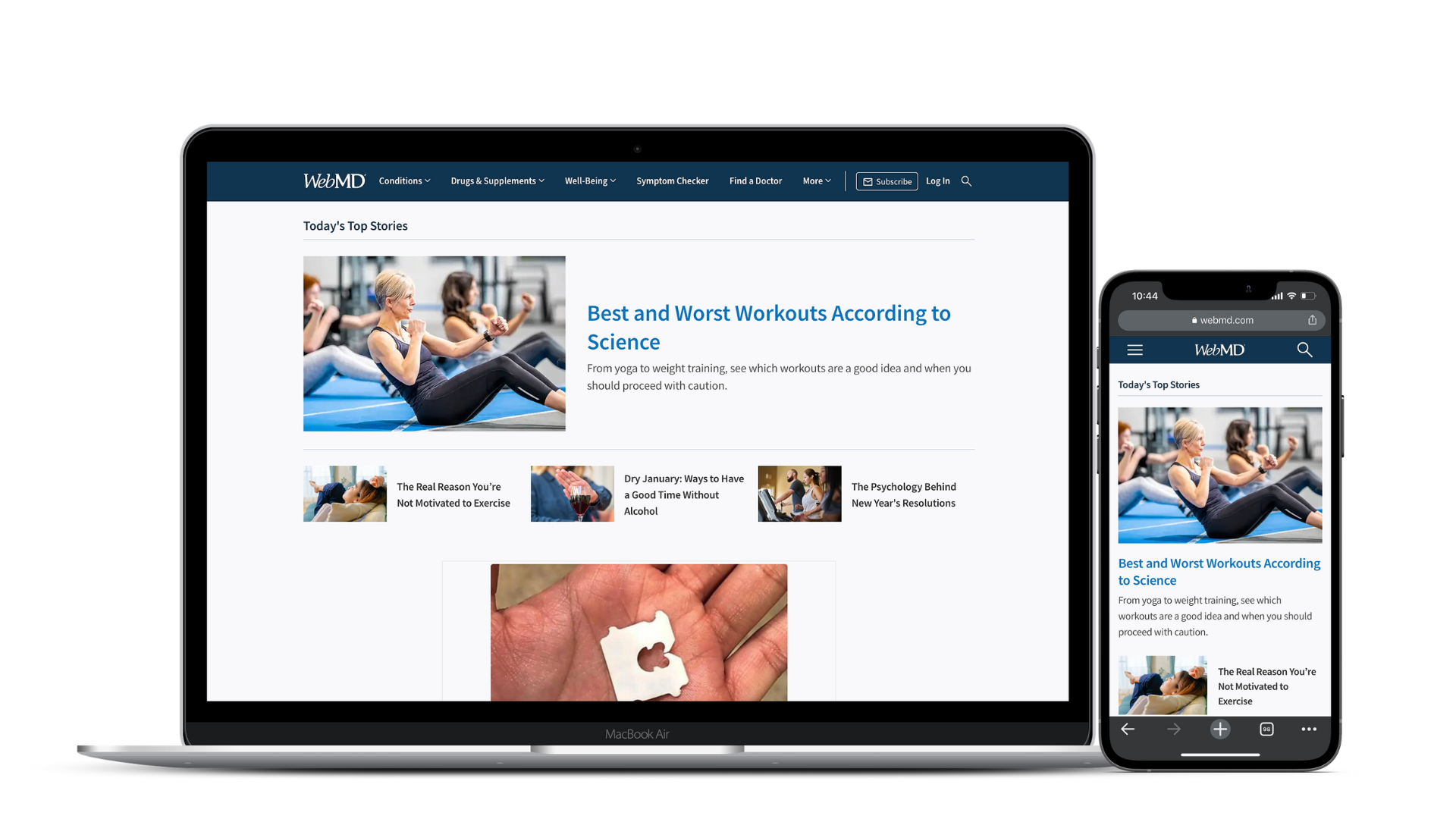
WebMD is an online publisher of health news and information. As one of the top healthcare websites in the world, WebMD provides credible resources in multiple formats, most popularly, an online, easy-to-read layout.
Tools Used
Keywords Everywhere, Search Operator (Google site search), Excel, Google Sheets
Background
WebMD’s content spans across hundreds of health conditions with audiences ranging from low to advanced levels of treatment. As one of the oldest and longest running health websites in the world, a need for more segmented content emerged. Medical reference articles for specific audience groups—those experiencing moderate to severe levels of disease–was identified as a content gap by Structured Content and Medical Review teams. Both teams mapped out audience segments, audience journeys and what needed to be covered for people experiencing moderate to severe levels of disease. This was used as the backdrop for my team, Content Strategy, to audit existing articles on webmd.com and to identify further content gaps necessary for the journey of a reader who lands on the site. This project, named Journeys 2.0, lasted for nine months, and resulted in 736 new assets (high-priority content) across 24 medical conditions.
Project Goals
My team and I worked to audit existing high-priority content in a framework designed by Structured Content and Medical Review teams to:
- identify gap areas within each condition, then create targeted, medical reference articles that would better serve our users and stakeholders,
- increase the inventory of content that provides information for specific audiences, like those with more severe or progressive condition states,
- increase high-priority content to address identified diversity, equity, and inclusion gaps.
The Process

Part I: Content Audit
We began by reviewing all medical reference articles for each high-priority topic health condition. Each url was pulled from our content management system, AIM, and populated on a spreadsheet. The spreadsheet was then updated with its appropriate audience segmentation, journeys segmentation, journey and audience tiers, and health dimension metrics.
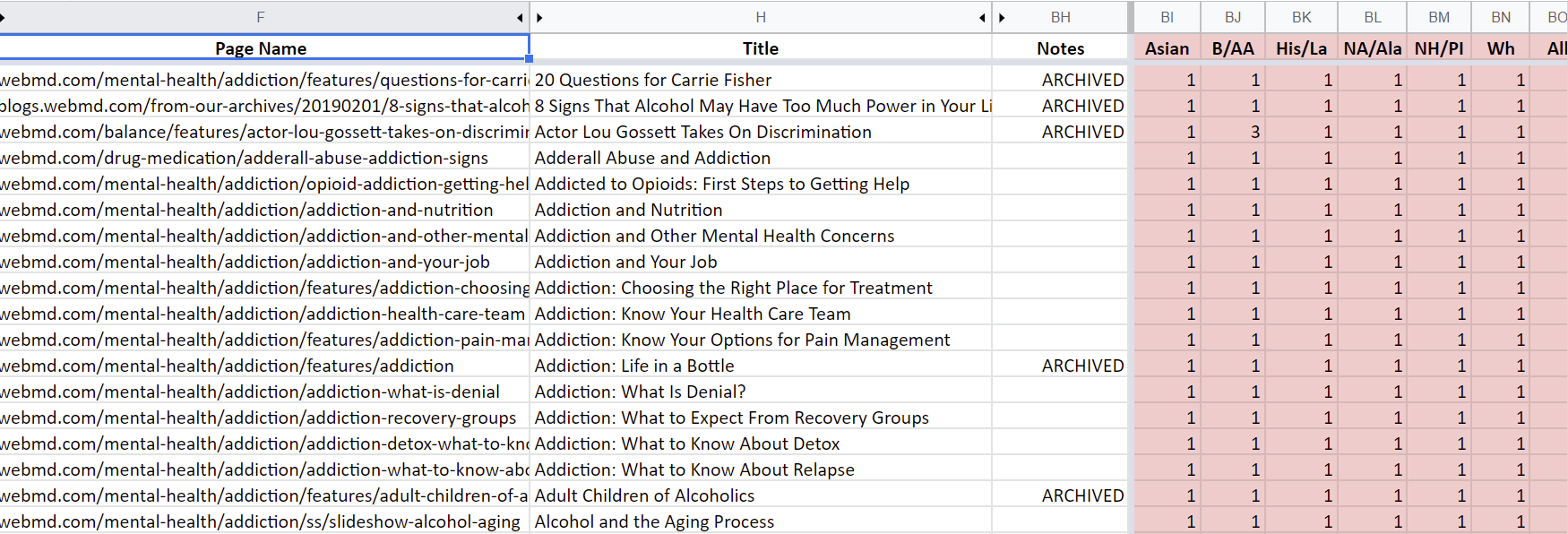
For example, working with the Addiction and Substance Abuse high-priority topic spreadsheet, my team and I “tagged” the content by marking each url in the appropriate column outlined on the spreadsheet. We rated audience addiction segments using the clinical parameters outlined by Medical Review teams.
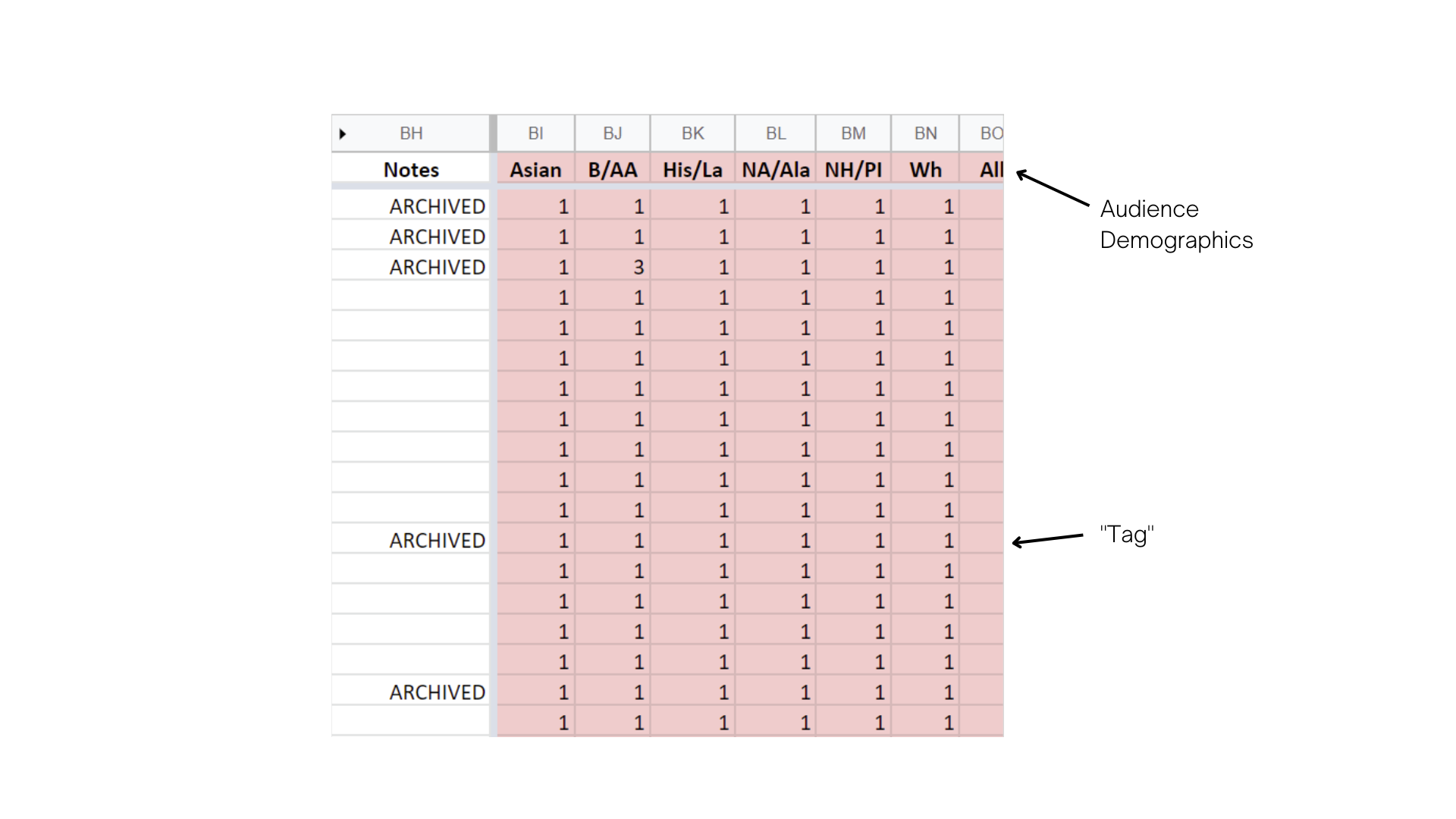
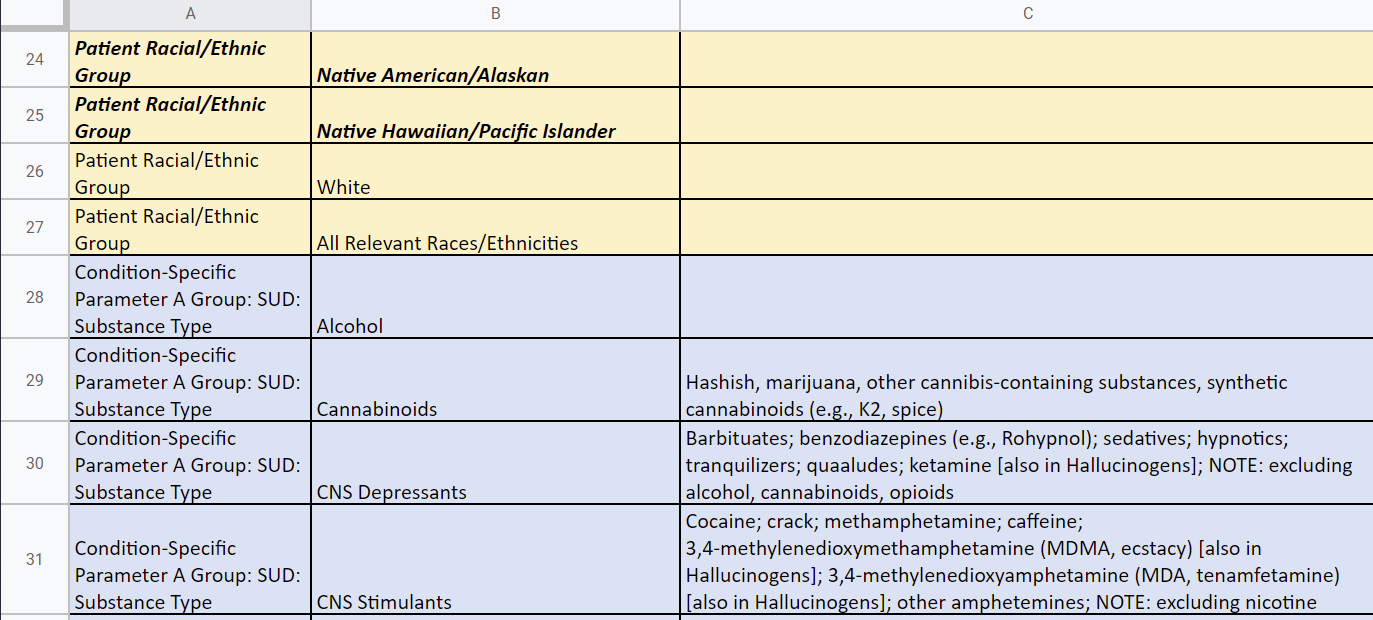
Metrics such as demographics, type of substance (alcohol, cannabinoids, etc) and rate of use were all covered. Journey segments listed everything from basics/prevention to clinical course to clinical management and living with categories. We had to determine how much of the article was about each category in each audience and journey segment.

Lastly, articles were measured using journey and audience tiers. The rating scale was from zero to three, where zero is more general and three is more specific, and therefore, more in depth.
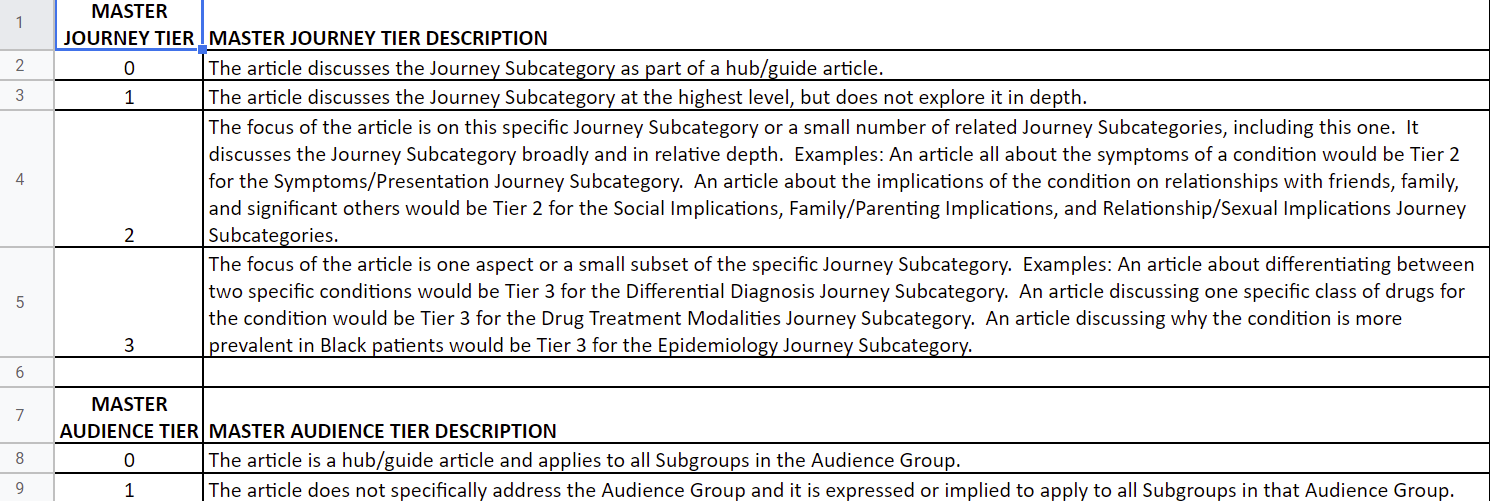
For example, we would read an article, and using the rating scale above, follow along each column and fill in a number.
Afterwards, we would have a visual representation of content that was missing by the visible blanks on the spreadsheet in each column (hence the gaps appearing on the spreadsheet). In the example below, there was no new content on testing for certain drugs.


Part II: Keyword Research and Topic Ideation
Next, we created topics to cover the gaps using Keywords Everywhere, a keyword research tool. If a specific keyword had a high search volume, we would make note of it on the spreadsheet. In the Addiction health category, a gap identified was for opioid misuse (fentanyl, morphine, opium, heroine, etc.). This gap was also the subgroup determined by Medical Review as the focus for the audit. We researched and created topics for other topics identified, like the need for fentanyl test strips.
We also searched webmd.com to see if similar content already existed. If it did, then we’d research another topic.
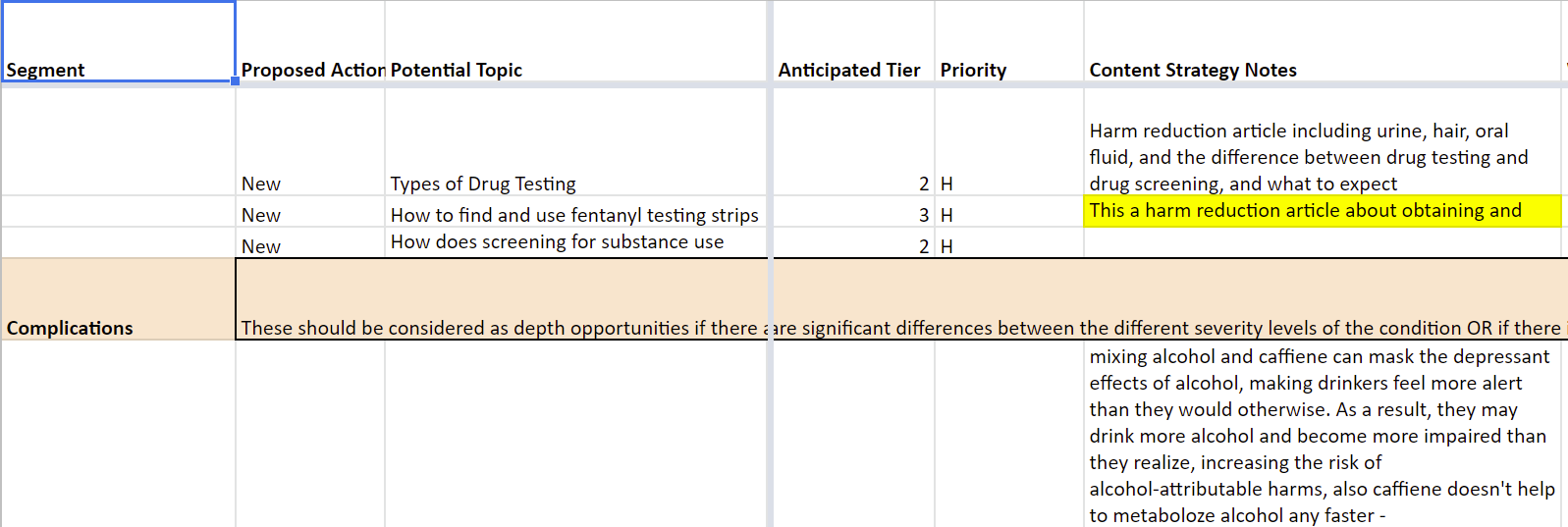
Once we finished our portion of the project, the article topics were passed to the SEO team to perform final keyword optimization. Next, the Editorial team was notified to incorporate the topics and specific keywords into each article by assigning a writer and an editor. Lastly, a doctor on the Med Review team would review the article for clinical accuracy and it would be published.

Part III: Auditing New Content
After the article was published, my team and I would “retag” the newly created urls against the previous spreadsheet metrics to determine if the audit was successful in identifying the gaps. This process was completed on all medical conditions in the high-priority category.
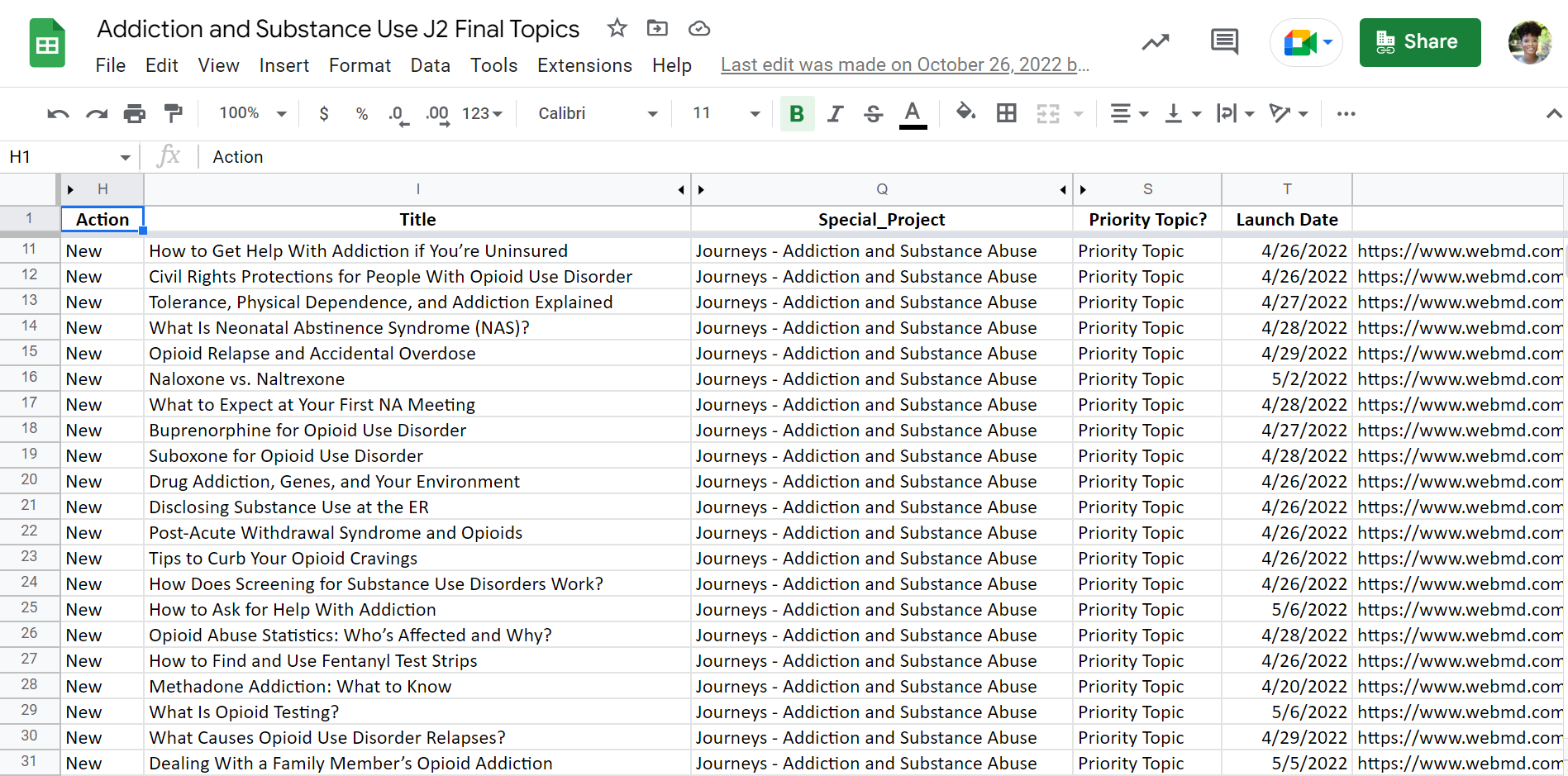
In the end, Content Strategy and Editorial created 32 new articles for the Addiction and Substance Abuse health topic category, equalling a total of 406,000 pageviews for 2022.
